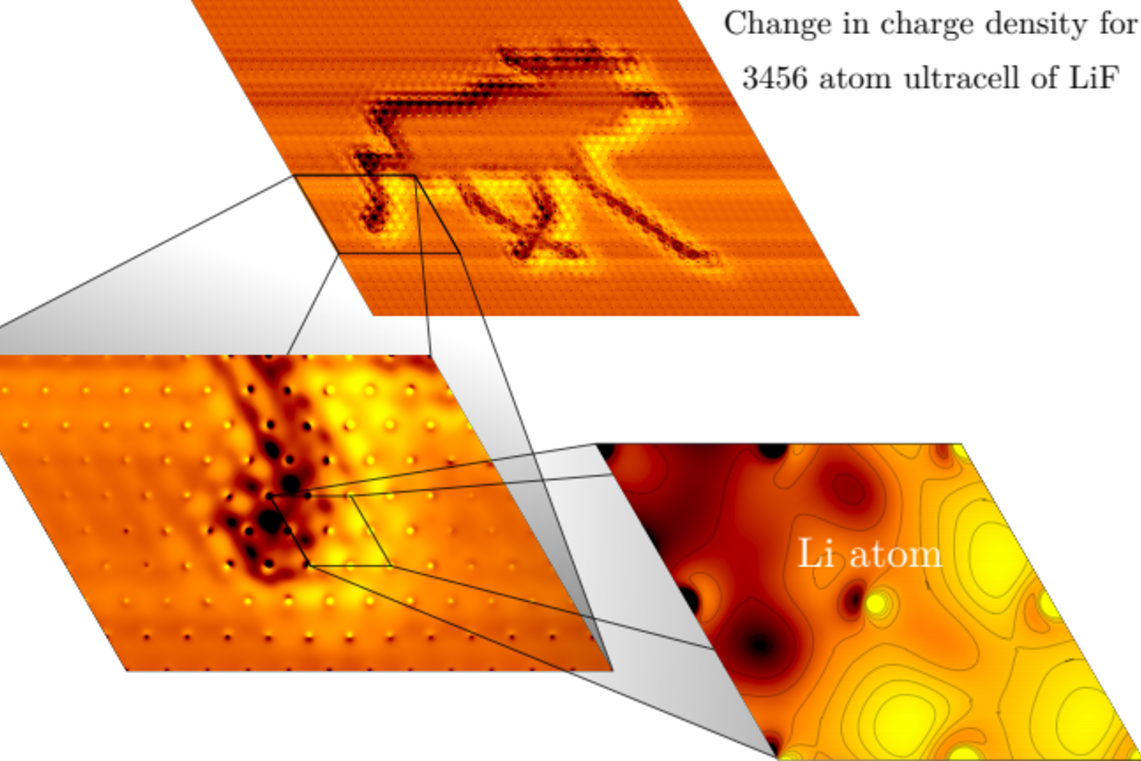While DFT offers in-depth understanding of microscopic properties, so far it cannot tell anything about physics on larger, mesoscopic length scales. Such effects include long-ranged quasiparticles, magnons, skyrmions, magnetic domains, or spatially dependent electric fields. As DFT is a formally exact theory, the underlying physics for such phenomena is readily at hand, yet actual calculations remain the very difficult. While it is, in principle, possible to use ever larger super-cells, in practice one quickly reaches the limit of computational viability.
Researchers from Max Born Institute, Berlin together with colleagues from Max-Planck-Institute for Microstructure Physics, Halle, and Fritz Haber Center for Molecular Dynamics, Jerusalem, have now developed a fundamentally different approach to drastically extend the length scale of DFT calculations without significantly increasing the computational cost. As reported in the journal Physical Review Letters, the approach relies on altered Bloch states by introducing an additional sum in the Bloch states over a finer grid in reciprocal space around each k-point. The resulting densities then become a Fourier series with a controllable periodicity, which may extend to nanometers.
To demonstrate the power of the new method, the scientists have performed a calculation which is too large for a conventional super-cell. Calculations were performed for 3456 LiF units under a random potential - for demonstration purposes in the shape of an Elk. The calculation was performed on 480 CPU cores and each iteration took about 40 minutes. The convergence was achieved in 24 iterations. This level of performance for an all-electron calculation indicates that physical phenomena involving modulations of the electronic state over hundreds or thousands of unit cells are within reach of this approach, paving the way to calculations of mesoscopic systems, such as magnetic domain walls or skyrmions, which have so far been too “computationally expensive” and hence out of reach for ab-initio methods.


